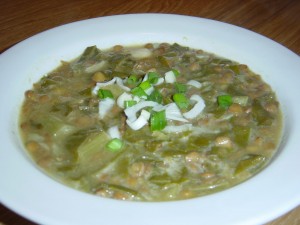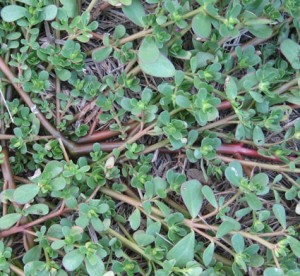Chicken Shawarma is another popular dish that can be prepared at home and taste good, the main thing is to use the right spices, and Khoubis Arabic bread (the one you can actually wrap). Shawarma spices are ready prepared and available at all Lebanese grocers, otherwise, you can prepare them yourself.
Serves 4 people
Ingredients
- 1 kg / 2¼ lbs chicken thighs, preferably skinless & boneless.
- Arabic bread, medium sized, allow 1 bread per person which gives 2 wraps.
- Pickled cucumbers, allow 1 or 2 per person. Some people prefer pickled sweet peppers, that is why some restaurants often serve it on the side.
- Toumeh which should be prepared in advance (see below).
For the marinade:
- 5 cloves of garlic peeled and smashed to a paste.
- 150 ml / 5fl oz lemon juice or malt vinegar.
- 2 tbsp olive oil.
- 1 tbsp shawarma spices, (or mix together in the ratio 2 parts allspice, 1 part black pepper and ½ part of cinnamon).
- You also need a Pyrex or a glass dish to marinate the chicken.
Method
1. Wash and pat dry the chicken thighs, then put them in a Pyrex or glass dish.
2. Whisk together all the ingredients for the marinade and pour over the chicken thighs, making sure that every single thigh is well coated. Cover the dish and leave it in the fridge for at least 4 hours, even better overnight.
3. When you are ready to serve, pre-heat the oven to 180 ºC / 350 ºF. Pop the chicken in its marinade, covered into the oven and bake for 40-45 minutes, checking it once. After that, take the lid or cover off and bake for another 5-10 minutes, by which time the marinade liquid should have dried up but the thighs should still be moist.
4. While the chicken is cooking, slice the pickled cucumbers into long strips and put them in a dish so people can help themselves if they like.
5. When the chicken reaches its last stage, you could warm up the bread and pass it around, so each person can open it up, making it ready for the filling. Note that Arabic bread does not take long to warm and can quickly get hard if overheated.
6. Slice each thigh into chunky pieces (debone if necessary) and fill the warmed bread, top it with Toumeh (garlic sauce), finishing off with the pickled cucumber slices (this is optional, for some people do not like it), roll it up and eat it straight. Use a paper napkin round the bread to catch any excess juices.
The oven temperature we use is usually for a conventional oven. If you have a fan one, you need to reduce the temperature by about 20ºC.



